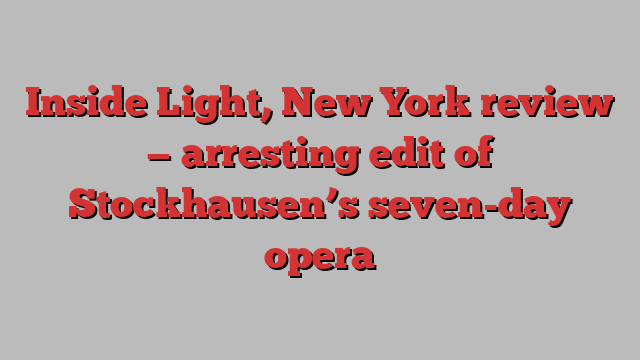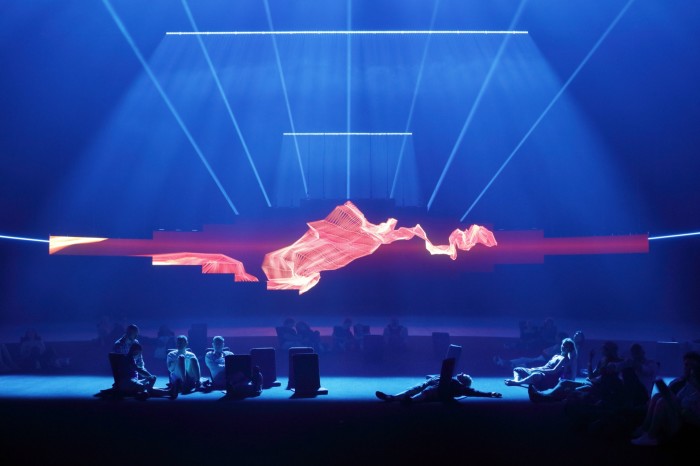
Unlock the Editor’s Digest for free
Roula Khalaf, Editor of the FT, selects her favourite stories in this weekly newsletter.
Taking up half of the massive Drill Hall in the Armory in New York, this presentation of sections of Karlheinz Stockhausen’s seven-opera cycle Licht, each based on one of the days of the week, is a hybrid work. Inside Light is not an abridgment of the mysteries of the original — it is without characters — but part electronic music concert, part art installation, part aesthetic ritual. Technically impressive, coolly beautiful and often fascinating, it is only intermittently involving musically and does not open up the world beyond our perceptions, as Stockhausen imagined. But on its own, it is a unique experience with an effect that lasts long past its finish.
Conceived by Armory artistic director Pierre Audi and implemented by sound projectionist Kathinka Pasveer, lighting designer Urs Schönebaum and video designer Robi Voigt, it lasts more than five hours, either in two parts across two nights or in one marathon (both versions are presented until the middle of June). The music is all pre-recorded, played through a spectacular multichannel system surrounding the audience, which sits on reclining cushions on a large, circular carpet. A thin LED circle in turn surrounds this, and there are spotlights on the ceiling and screens facing each other from two sides which display abstract videos that move both with and against the music.
The music comes from different days of Licht; Montags-Gruß (Monday Greetings) opens part one and is followed by other excepts from the cycle; part two is the “Greeting” and “Farewell” from Freitag. Montags-Gruß, for Bassett horns playing in warm, buttery microtones, is a stimulating work. The choral Unsichtbare Chöre follows, and something about hearing human voices without seeing singers establishes the insurmountable problem of electronic music concerts, which is that without live performers in a reciprocal emotional loop with the audience, listening becomes isolating and it’s hard to find palpable responses.
Still, the electronic music is one masterpiece after another, Stockhausen managing the trick of making musical forms one can sense even as they can’t be defined, using a limited palette of sounds with care and patience. The lighting has this quality. Using in turn orange, yellow, green, blue, and red, it has an elegant precision, changes come placidly, nothing is excessive. Without characters, the lights and animation become the narrative and eventually the focus.

There are shifting patterns on the screens, from rippling water to moving lattices, while the spotlights shine down on the floor or play across the space above. The audience is inside this light, even itself illuminated at various spots. Some members sit silently, others wander the circle, relishing the changing audio perspective. Some sleep, some leave — this is a slow and still work.
As the spotlights segment different geometries of the hall, the performance becomes as much sculptural and architectural as musical. In slow cycles, the lights form the Golden Ratio, shining down on the audience. As Stockhausen’s voice slowly counts up from one, the lights gradually wink out. The revelation is that this was a journey to some kind of perfection.
★★★★☆
To June 14, armoryonpark.org